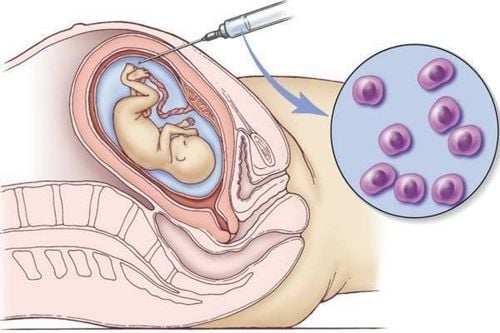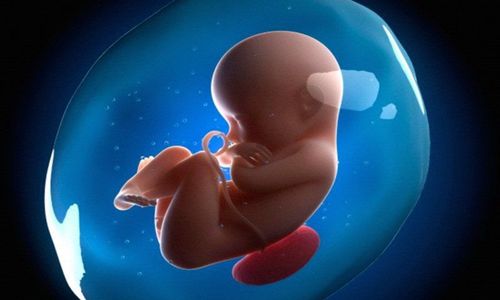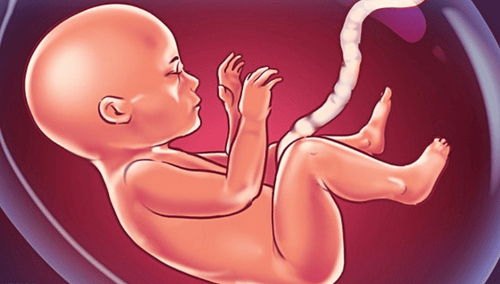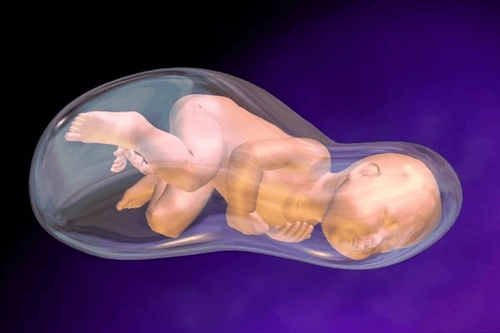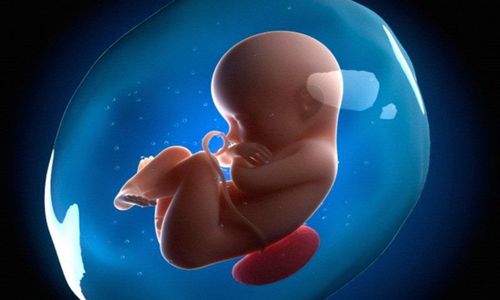This is an automatically translated article.
The article was professionally consulted by Dr. Nguyen Anh Tu - Doctor of Obstetric Ultrasound - Prenatal Diagnosis - Obstetrics Department - Vinmec Hai Phong International General Hospital.About 1% of pregnant women experience polyhydramnios. If not detected and treated promptly, polyhydramnios can cause dangerous complications for both mother and baby.
1. What is amniotic fluid?
During pregnancy, the fetus lies in the mother's uterus and is surrounded by amniotic fluid. This is a nutrient-rich environment, which plays an important role in the survival and development of the fetus during pregnancy. Amniotic fluid appears from the 12th day after conception. Amniotic fluid is made up of: fetus, amniotic membrane and maternal blood.
From the fetus: In the early stages of pregnancy, the fetal skin is involved in the formation of amniotic fluid, until the 20th-28th week of pregnancy, when the substance appears, this amniotic line will stop. From the 20th week, amniotic fluid originates from the trachea-bronchioles, due to the fetal plasma permeation through the respiratory mucosa of the baby. The most important source of amniotic fluid is due to the baby excreting urine into the amniotic cavity from the 16th week of pregnancy. From the amniotic membrane: The amniotic membrane covers the umbilical cord placenta, also secretes amniotic fluid From the mother's blood: There is an exchange of substances between the mother's blood and amniotic fluid through the amniotic membrane. Amniotic fluid has the function of nourishing the embryo, keeping the nutrients of water and other substances to ensure the survival and development of the fetus. Pregnant women from 34 weeks or more absorb 300-500ml of amniotic fluid per day. This amount of amniotic fluid contributes to the formation of meconium, helps to balance the fluids in the fetus's body and is partially filtered to form urine for the baby. Amniotic fluid also has the function of protecting and protecting the fetus from collisions and trauma, especially ensuring a sterile environment for the baby in the amniotic sac.
Amniotic fluid creates an environment for the fetus to develop harmoniously and to normalize the position of the fetus in the mother's genital tract in the last months of pregnancy. During labor, amniotic fluid continues to protect the fetus from the trauma of uterine contractions and infection. Amniotic fluid helps to establish the amniotic sac and dilates the mother's cervix, making it easier to clear the cervix.
When the water breaks, the amniotic fluid is oily to help lubricate the mother's genital tract so that the fetus is easier to be born.
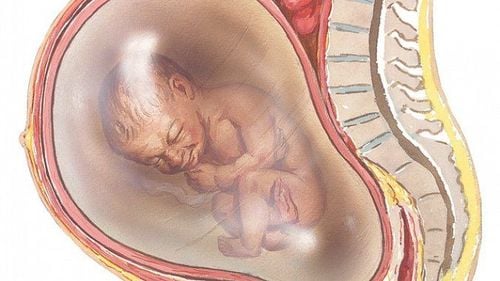
2. What is polyhydramnios?
As mentioned above, normally, the fetus will swallow amniotic fluid through the body like the mechanism of urination. This is how the baby controls the amount of amniotic fluid around him. But when the baby doesn't swallow the amniotic fluid, the amount of amniotic fluid around can increase rapidly. And when the amniotic fluid exceeds 2 liters, it is called polyhydramnios. In severe cases of polyhydramnios, the amount of amniotic fluid can be up to 3 liters, 3 times more than the normal number.
Polyhydramnios often causes pregnancy symptoms such as indigestion, heartburn, constipation, leg edema, varicose veins.
3. Causes of Polyhydramnios
Polyhydramnios can be caused by many causes such as pathology of the amniotic membrane, of the umbilical cord placenta, placental edema, fetal enlargement, maternal disease such as diabetes mellitus, .. or idiopathic.
Maternal causes may be due to: Maternal diabetes (common), mother carrying twins or multiples, anti-Rh antibodies and hemolytic diseases secondary to abnormal antibodies can cause Severe fetal anemia or fetal edema is associated with polyhydramnios. Abnormalities in the fetus: The baby will stop the process of drinking amniotic fluid - urinating, leading to excess amniotic fluid. This condition includes fetal abnormalities such as cleft palate, pyloric stenosis... Other factors that increase polyhydramnios are: anemia in the fetus; fetal infection, blood type incompatibility between mother and baby...
4. Signs of polyhydramnios
Polyhydramnios causes pregnant women to appear uncomfortable signs such as: increased back pain, shortness of breath, leg swelling (especially big toe), rapid heart rate, loss of appetite, nausea, vomiting, apple constipation, urinary retention...
Polyhydramnios will also be detected when pregnant women go for an ultrasound. Ultrasound can accurately confirm the status of polyhydramnios by measuring amniotic fluid at 4 points around the fetus to calculate the amniotic index (AFI). The index is usually about 10-25cm in the 3rd stage of pregnancy. Therefore, if the AFI exceeds the threshold of 25cm, it means that you have polyhydramnios. The higher the AFI, the more severe the polyhydramnios.

Polyhydramnios during pregnancy, if due to malformations or fetal malformations, the prognosis is very poor. Too much amniotic fluid will make the baby quite mobile in the uterus, so it can cause the umbilical cord to wrap around the neck, abnormal position. Polyhydramnios makes the mother's abdomen distended, making it difficult to breathe, causing uterine contractions and preterm labor. During labor, polyhydramnios is the cause of prolonged labor, making the baby more likely to fail, and the mother has uterine atony, causing postpartum hemorrhage. Besides, polyhydramnios will be prone to sudden rupture of membranes and possible complications such as placental abruption, umbilical cord prolapse, abnormal position and amniotic fluid embolism. These are life-threatening for both mother and child.
Doctor Nguyen Anh Tu has 6 years of experience in obstetrics and gynecology ultrasound, specially researched and trained in pregnancy ultrasound - prenatal diagnosis. Dr. Tu has completed courses on ultrasound - prenatal diagnosis of the FMF International Fetal Medicine Association; trained in consulting and implementing diagnostic intervention techniques in fetal medicine and participated in many specialized conferences and seminars on Fetal Medicine. Currently a doctor at the Department of Obstetrics and Gynecology, Vinmec Hai Phong International General Hospital
Please dial HOTLINE for more information or register for an appointment HERE. Download MyVinmec app to make appointments faster and to manage your bookings easily.





